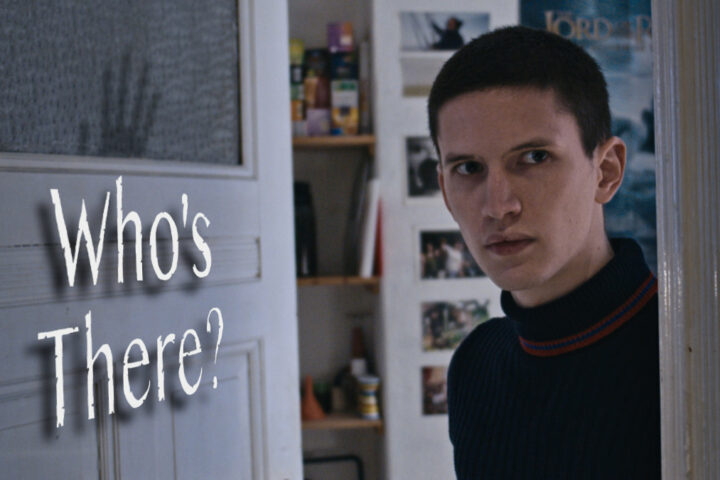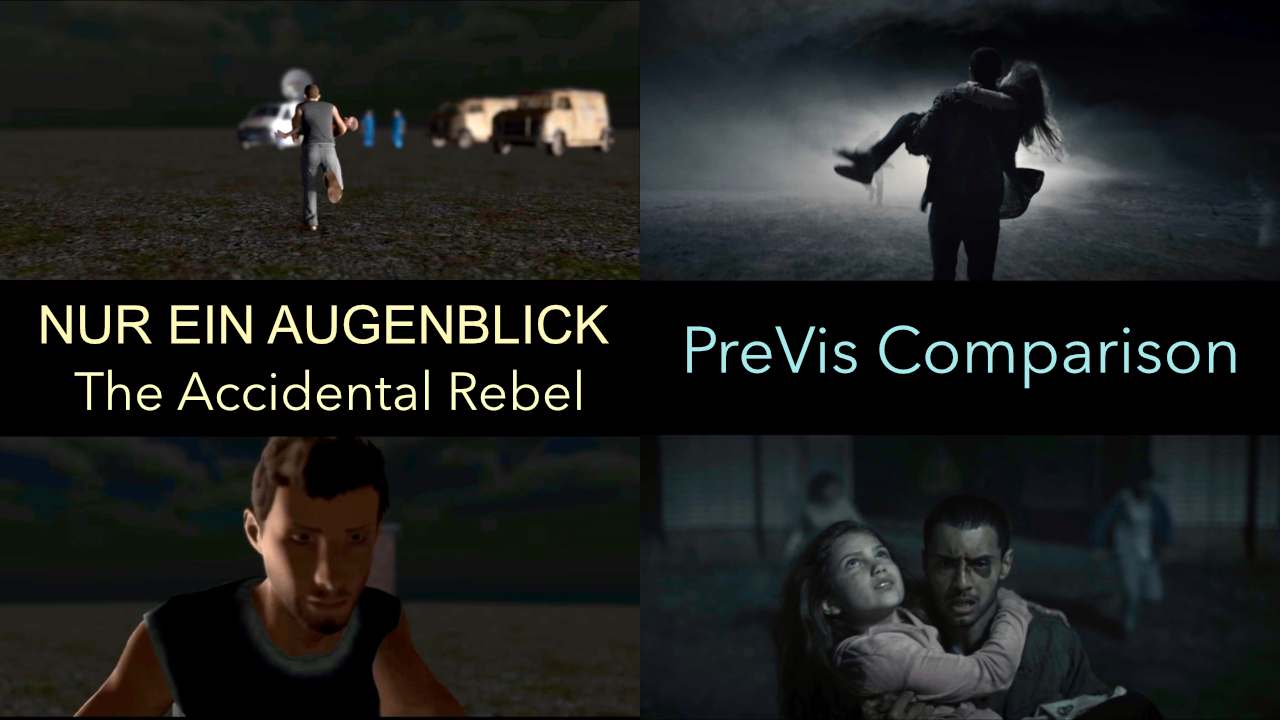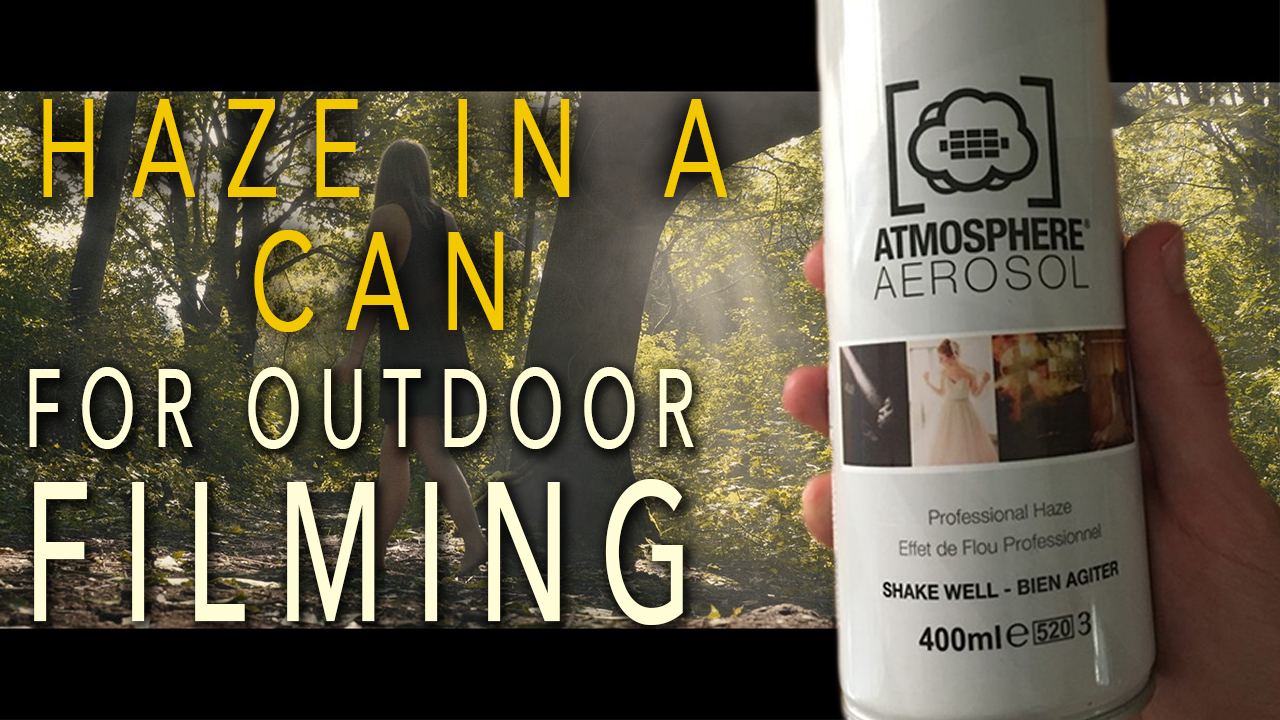I finally finished my horror short film “Reflected” which you can watch on Youtube and Vimeo. Make sure to watch the film first before reading on, preferably in a dark room!
After completing “Who’s There?” in 2021, which began as a camera test and evolved into a horror short, I decided to make another low-budget horror short film. Once again, it would involve just myself and an actor on set, with a story that worked without dialogue and using only equipment I owned. Thus I wrote a one-page outline, but instead of a screenplay I decided to do a PreVis instead (using the ShotPro software).
Pre-production
As it became apparent that some VFX would be necessary, I shot some tests with VFX-Artist Noah Hähnel to determine how to achieve these shots.
But then I had to pause work on that project due to a directing job which kept me busy for over a year.
In September 2023, I could finally resume pre-production. I did a test shoot/rehearsal with actor Samuel Freigh and also tested some lighting set-ups. That’s when I decided to paint one of my bedroom walls in a dark blue to help selling the night time setting.
Production
The short film was shot over the course of seven days. I shot with my Blackmagic Pocket 6K Pro (BMPCC 6K Pro)and the Canon EF-S 17-55 f/2.8 lens, recording BRAW onto an external Samsung T5 SSD. I didn’t record any sound during the shoot.
For camera movements I utilised a slider and for two shots my old “pram-dolly” (see photo below), which isn’t 100% smooth but worked ok, since the first shot had to be 3D-tracked and stabilised in SynthEyes for VFX anyway. For the other shot I used the Gyro-Stabilization in DaVinci Resolve.
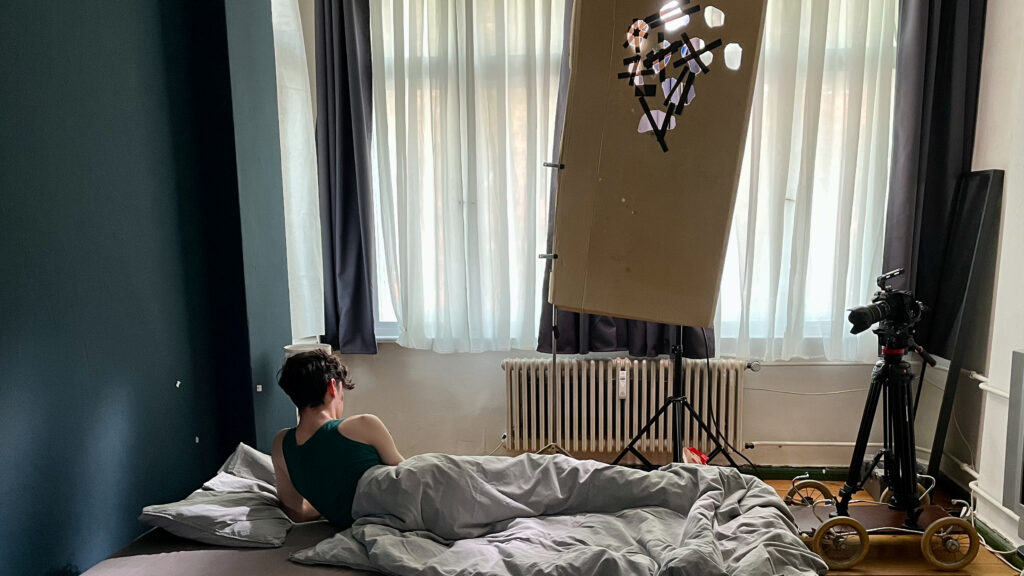
My lighting equipment consisted of an old Arri 500W Tungsten Fresnel, two small Rollei Lumis LEDs (Slim LED S Bi-Colour and Slim LED S – RGB) and an IKEA China ball with a 60W tungsten bulb.
Since the story takes place at night, the primary light source was the moon shining through the windows. Due to the layout of my bedroom, some shots had to be filmed front-lit. To make these look more interesting, I decided to create patches of moonlight by directing the 500W Fresnel with some CTB through a DIY gobo made out of cardboard.
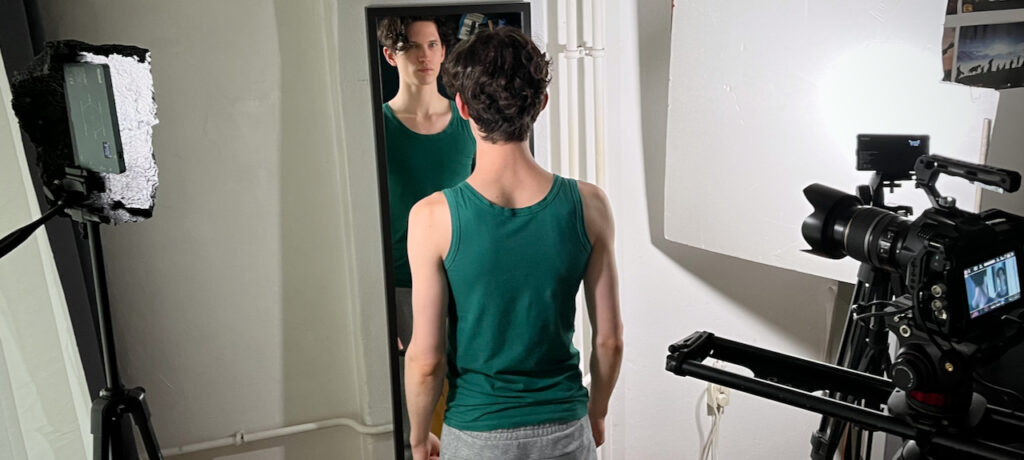
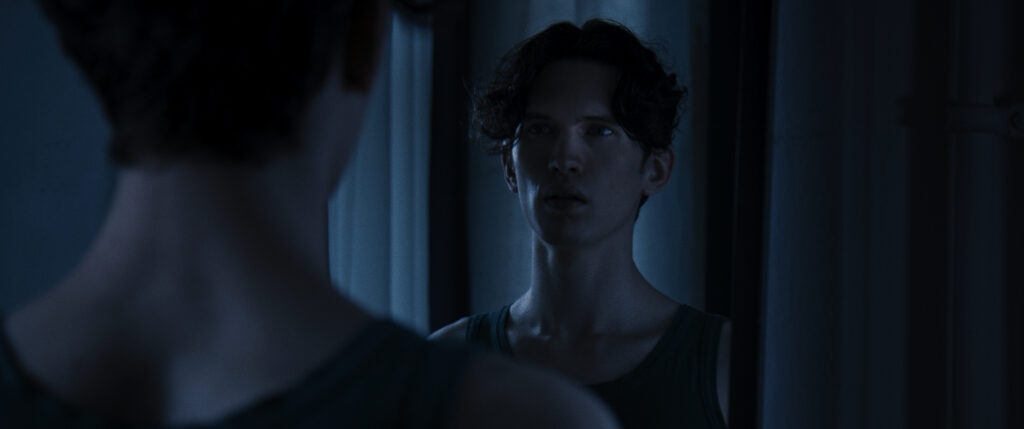
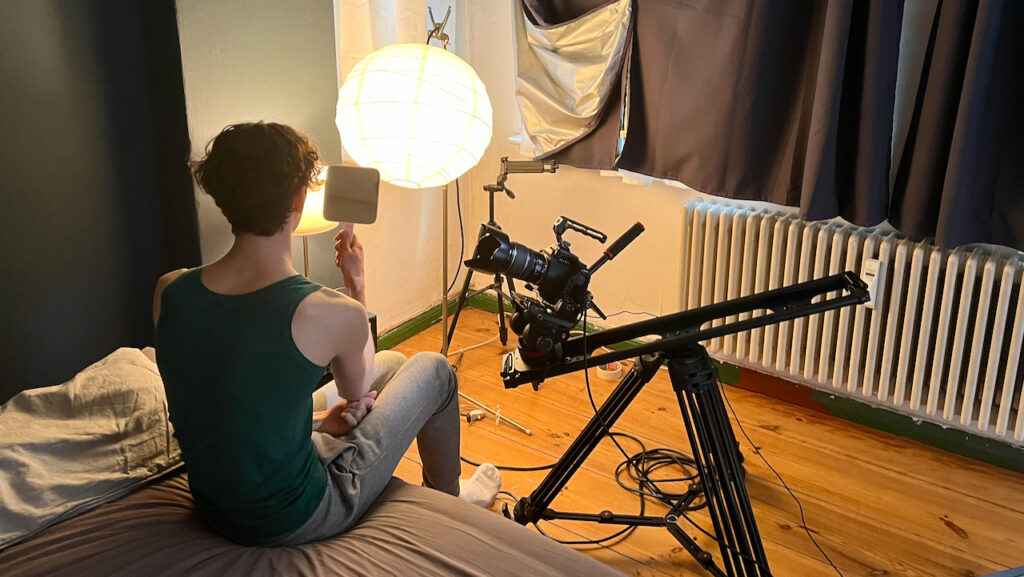
VFX
All shots featuring the hand mirror involved VFX, as the camera would have been reflected as well. Furthermore this approach allowed for more control over what is reflected. For the main shot, the mirror was prepped with tracking markers so it could be 3D-tracked in SynthEyes. Additionally, we had to shoot the background plate and the actor’s face in front of a green screen. Both elements were then inserted into the mirror.
The most complex VFX shot was the opening of the film, where the camera moves towards a mirror and then through it, ending on the main character sleeping in his bed. Here, we shot the push-in on the actor lying in the bed first. Noah placed some markers on the wall and the floor to 3D-track the camera later. Then, we shot a still image of the opposite wall with the mirror. This still image was then placed into the first shot using the tracking data. We also shot a dust element, which was composited onto the mirror plane. Next, the focus shift and the title animation were added. Finally, the tracking markers had to be removed.
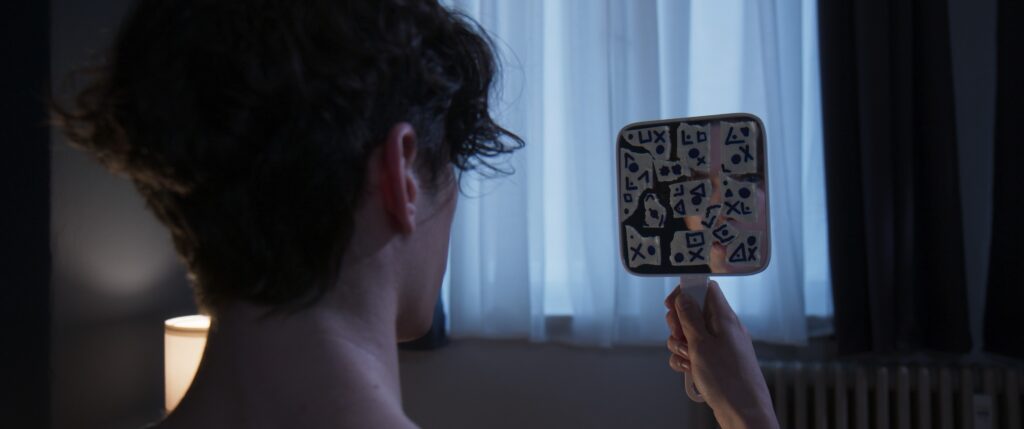
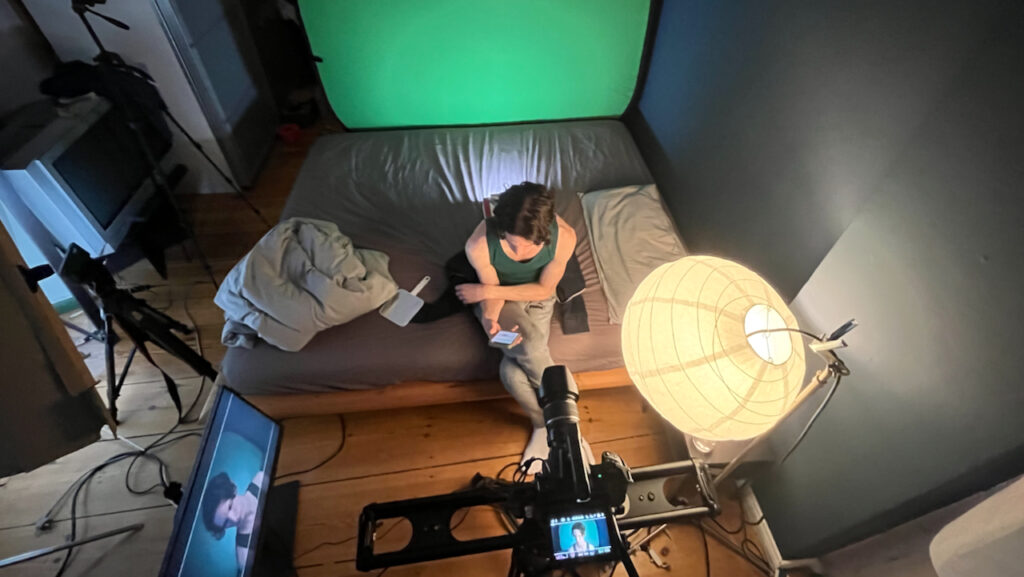
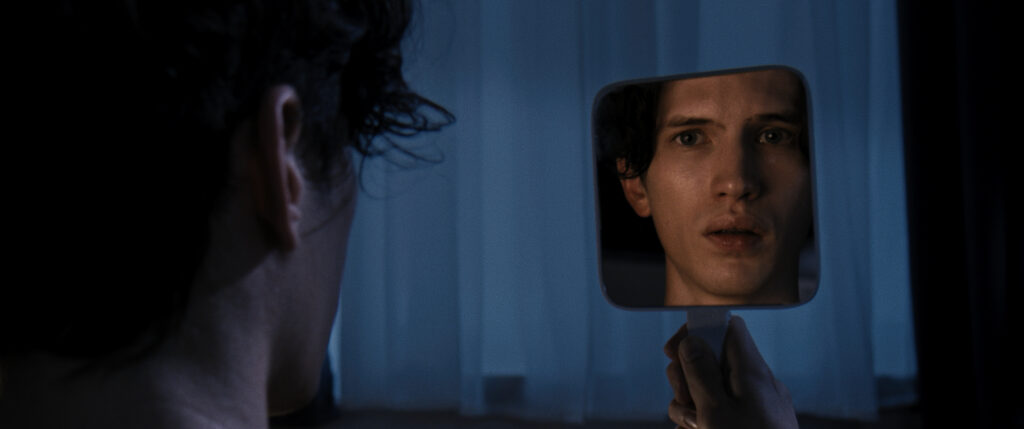
Post-production
Editing, mixing and color grading were all done natively in BRAW in DaVinci Resolve Studio. Once my edit was locked, composer Eike Ebel Groenewold started composing the music. I recorded all the necessary sounds and Noah Hähnel started work on the VFX using Fusion Studio and SynthEyes. We opted for the ACES workflow which made collaborating easier.
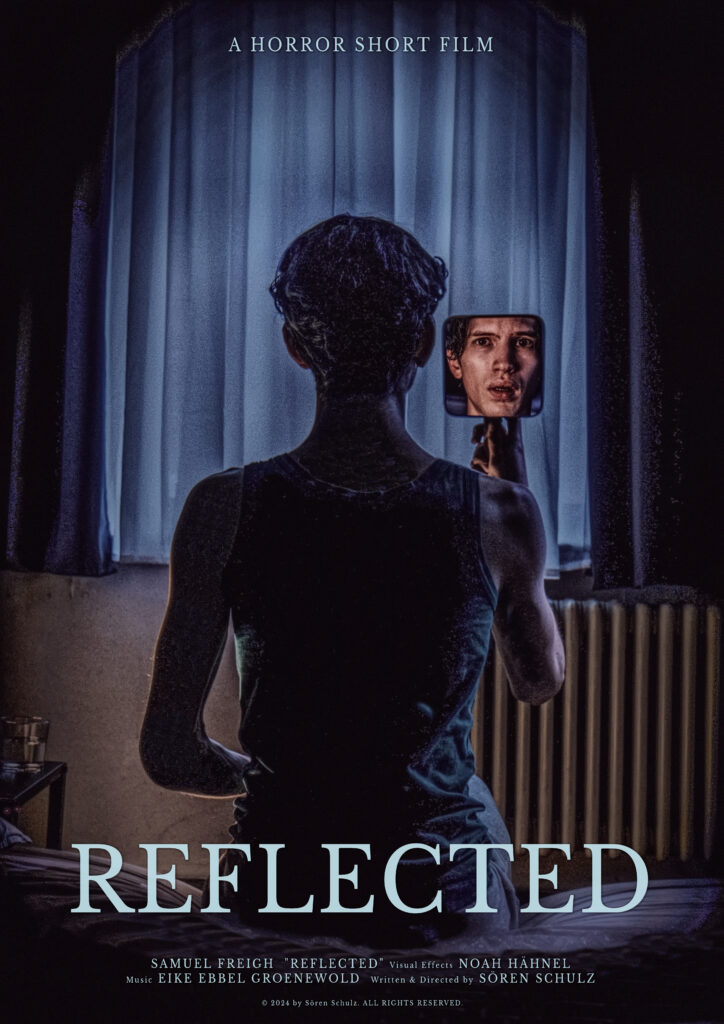
Tech Specs:
2,39:1
Camera: Blackmagic Pocket Cinema Camera 6K Pro
Lens: Canon EF-S 17-55 f/2.8
6K BRAW
